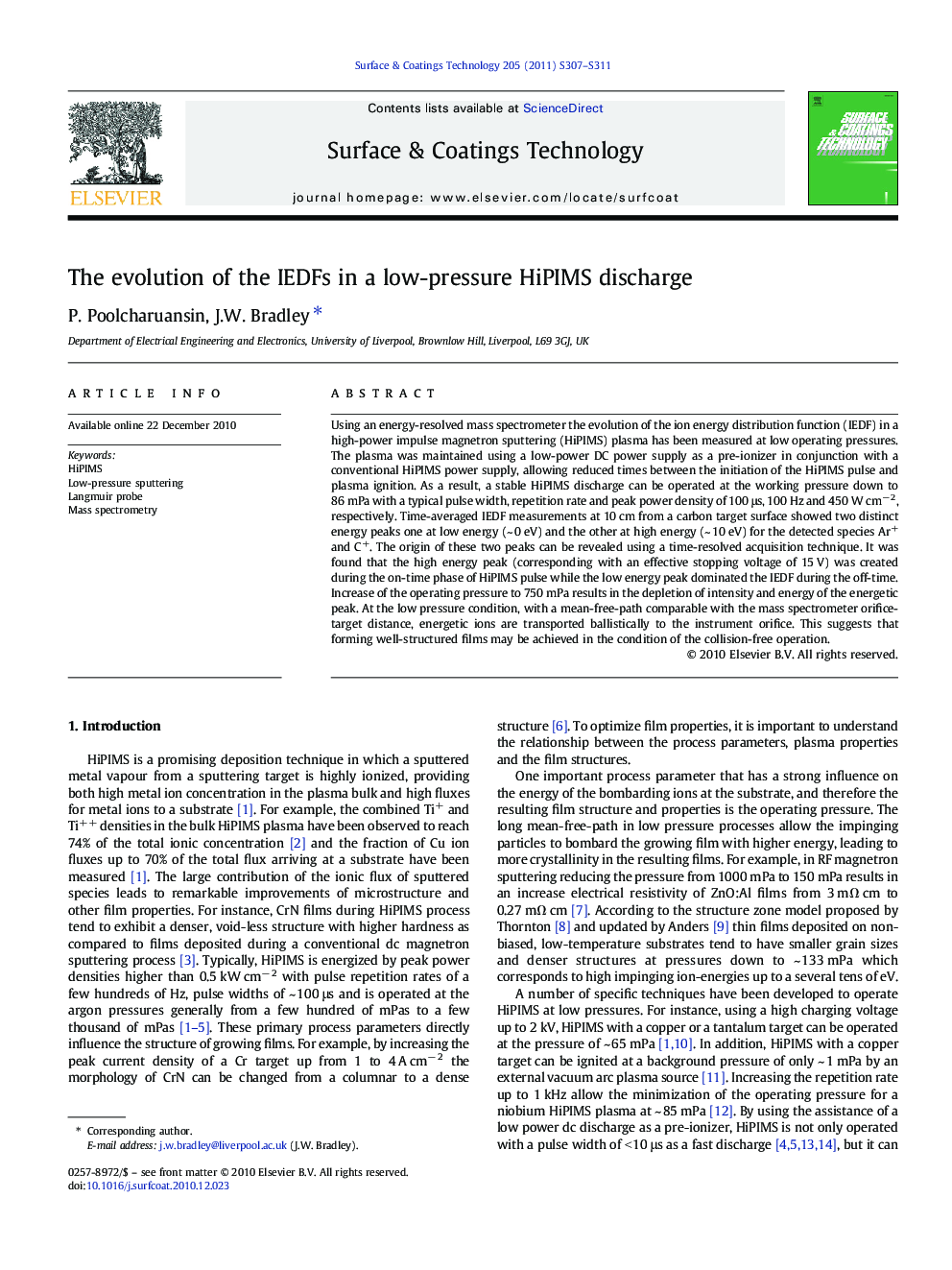| Article ID | Journal | Published Year | Pages | File Type |
|---|---|---|---|---|
| 10668520 | Surface and Coatings Technology | 2011 | 5 Pages |
Abstract
Using an energy-resolved mass spectrometer the evolution of the ion energy distribution function (IEDF) in a high-power impulse magnetron sputtering (HiPIMS) plasma has been measured at low operating pressures. The plasma was maintained using a low-power DC power supply as a pre-ionizer in conjunction with a conventional HiPIMS power supply, allowing reduced times between the initiation of the HiPIMS pulse and plasma ignition. As a result, a stable HiPIMS discharge can be operated at the working pressure down to 86 mPa with a typical pulse width, repetition rate and peak power density of 100 μs, 100 Hz and 450 W cmâ 2, respectively. Time-averaged IEDF measurements at 10 cm from a carbon target surface showed two distinct energy peaks one at low energy (~ 0 eV) and the other at high energy (~ 10 eV) for the detected species Ar+ and C+. The origin of these two peaks can be revealed using a time-resolved acquisition technique. It was found that the high energy peak (corresponding with an effective stopping voltage of 15 V) was created during the on-time phase of HiPIMS pulse while the low energy peak dominated the IEDF during the off-time. Increase of the operating pressure to 750 mPa results in the depletion of intensity and energy of the energetic peak. At the low pressure condition, with a mean-free-path comparable with the mass spectrometer orifice-target distance, energetic ions are transported ballistically to the instrument orifice. This suggests that forming well-structured films may be achieved in the condition of the collision-free operation.
Related Topics
Physical Sciences and Engineering
Materials Science
Nanotechnology
Authors
P. Poolcharuansin, J.W. Bradley,
